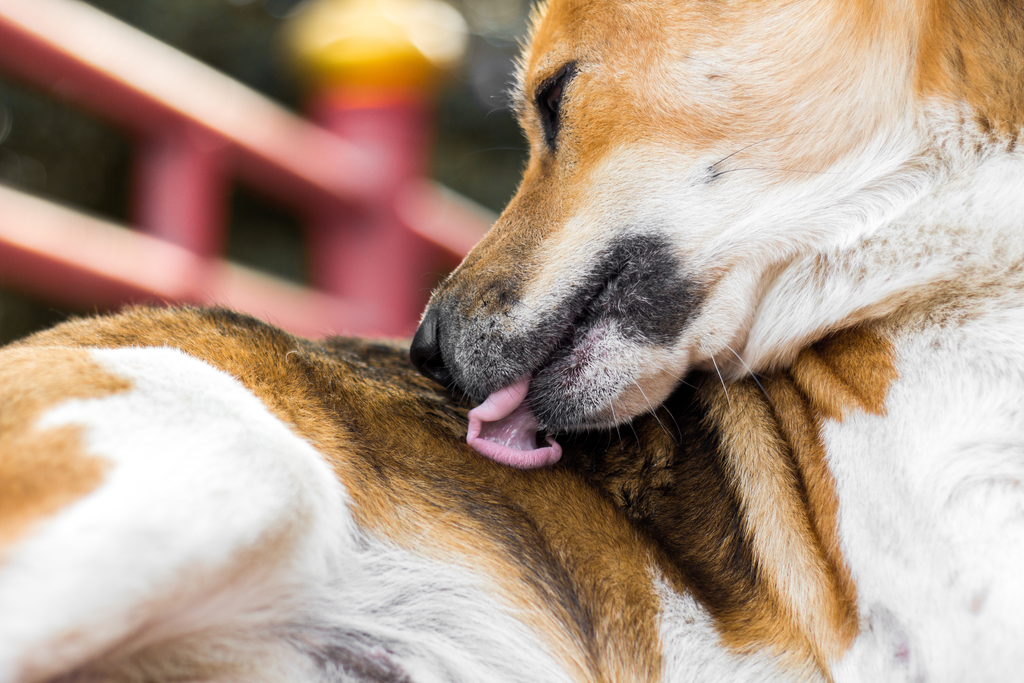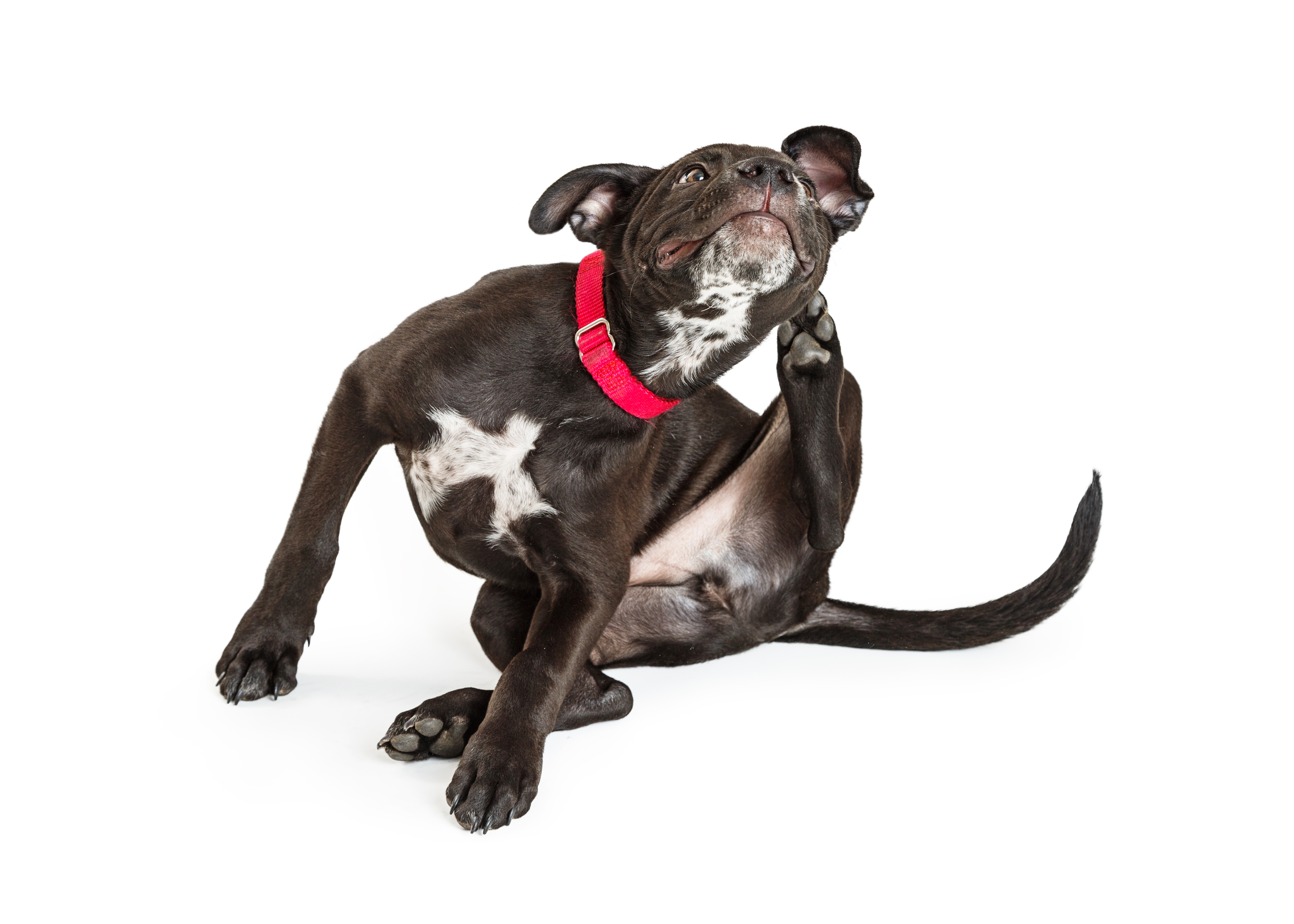Dust Mites Can Spell Trouble for Your Dog
Dust mite allergy is a common problem not only in humans but in dogs too. Your pet may keep you up all night as he or she itches and scratches. These allergic reactions can be treated easily.
Just like humans, a dog’s natural protection against infection is its immune system. If the immune system is working well, it identifies potential pathogens and removes them to keep your dog healthy.
However, in some cases, a dog’s immune system can falsely detect some substances as foreign and dangerous. This is most common for proteins being released by insects. Dust mite allergy in dogs isn’t caused by dust. It is actually a reaction to a protein found in feces and dead body parts of dust mites.
Dust mites are everywhere! They grow more in moist and warm conditions, hence they like living in carpets and beds. In general, they are harmless as they feed off dead skin cells, but with repeated exposure to certain proteins may cause humans and dogs to develop an allergy.
Keep reading to know more about dust mite allergy in dogs and how to get them a relief.
Common Symptoms
Most dogs show symptoms of dust mite allergy at 6 months to 2 years old. Allergies can affect any breed, but there is evidence suggesting that they can be passed on to an offspring.
And since dust mites are a problem all throughout the year, allergies are constantly present but may flare up during winter.

Common signs of dust mite allergy in dogs include:
- Excessive scratching
- Excessive licking
- Sneezing
- Runny eyes
- Difficulty breathing
- Coughing
- Vomiting
- Diarrhea
If not treated immediately, constant scratching and licking may cause a thickened skin. It may likewise get darker.
Diagnosis
From 30-80% of allergic dogs test positive for dust mite sensitivity. Those who have once lived primarily outdoors can develop sensitivity once they started living indoors.
Your vet will consider a wide range of factors to decide whether dust mites are the cause of your dog’s allergic reactions. A thorough physical exam will be performed to check the coat condition. Vital signs are important too.
Your vet may likewise ask you a few questions:
- When did the symptoms start to appear?
- Where do they normally occur?
- Are they seasonal?
- Do they get worse after cleaning or vacuuming?
- Do the symptoms get better outdoors?
- Is your dog allergic to a certain kind of food?
There a variety of tests that can be done to help diagnose a dust mite allergy in dogs:
- A serum test can be done on your pet’s blood sample to try to induce a reaction.
- Intradermal tests are quite expensive but very accurate. They will normally sedate your dog and with the use of a small needle, he or she will be tested for 75 different allergens.
Medical Treatment and Home Remedies
Your vet will check on your dog’s skin for signs of allergic reactions, and he may ask about any recent changes in her living conditions.
The best treatment options for any allergy in dogs include antihistamines and corticosteroids, which can be in a form of a cream, gel, or ointment. This will help relieve inflammation and itching.
A special shampoo may likewise be given to lessen the itchiness and an antibiotic to prevent infection.
Immunotherapy shots may be given. They are effective but may take a long time to work.
Desensitization can be done. Your vet may teach you how to give your pet a shot with a small amount of allergen, usually a dust mite waste, on a regular basis. The amount may be increased gradually to desensitize your dog gradually. The problem with this technique is that it may also take months of shots before your dog becomes completely desensitized. You have to watch out for a serious reaction too. In case of emergency, an epinephrine may be injected to counteract the reaction.
Getting your dog’s skin back to normal is one of the best ways to relieve symptoms of dust mite allergy. Regular oatmeal baths can help soothe dry and itchy skin. If your dog has developed hot spots, try using an anesthetic spray. This will help relieve pain and encourage her not to chew on irritated hot spots. This will greatly help in preventing the condition from worsening.
Prevention
The following tips may help control dust mite populations. Special attention must be given to your dog’s sleeping area.
1. Bare floors like vinyl, tile, or hardwood are better options compared to a carpet. If you really want to use a carpet, it should be a low pile.
2. Make sure to use synthetic materials in your dog’s bedding. Wool and feathers must be avoided. Cedar shavings may also cause allergic dermatitis in dogs.
3. Wash your pet’s bed, not just the cover, regularly in hot water.
4. If you are co-sleeping with your dog, encase mattresses using plastic and seal zippers with a tape. Use washable pads and blankets, if possible. A waterbed is considered to be the most effective against dust mites.
5. Change your air conditioning filters and furnace regularly. Use electrostatic filters are said to be more effective in filtering out dirt and dust mites.
6. Switch on your air conditioning during warm months to control the temperature. Central air conditioning is better, but window units may also be helpful. Try to keep the humidity levels between 30-50 percent. Dehumidifiers are of great help!
7. Clean the floors using a vacuum daily. The room must be properly aired after cleaning.
8. Groom your dog regularly, preferably outside your home.
Hopefully, these facts and tips will help you control dust mites in your home and dog.

